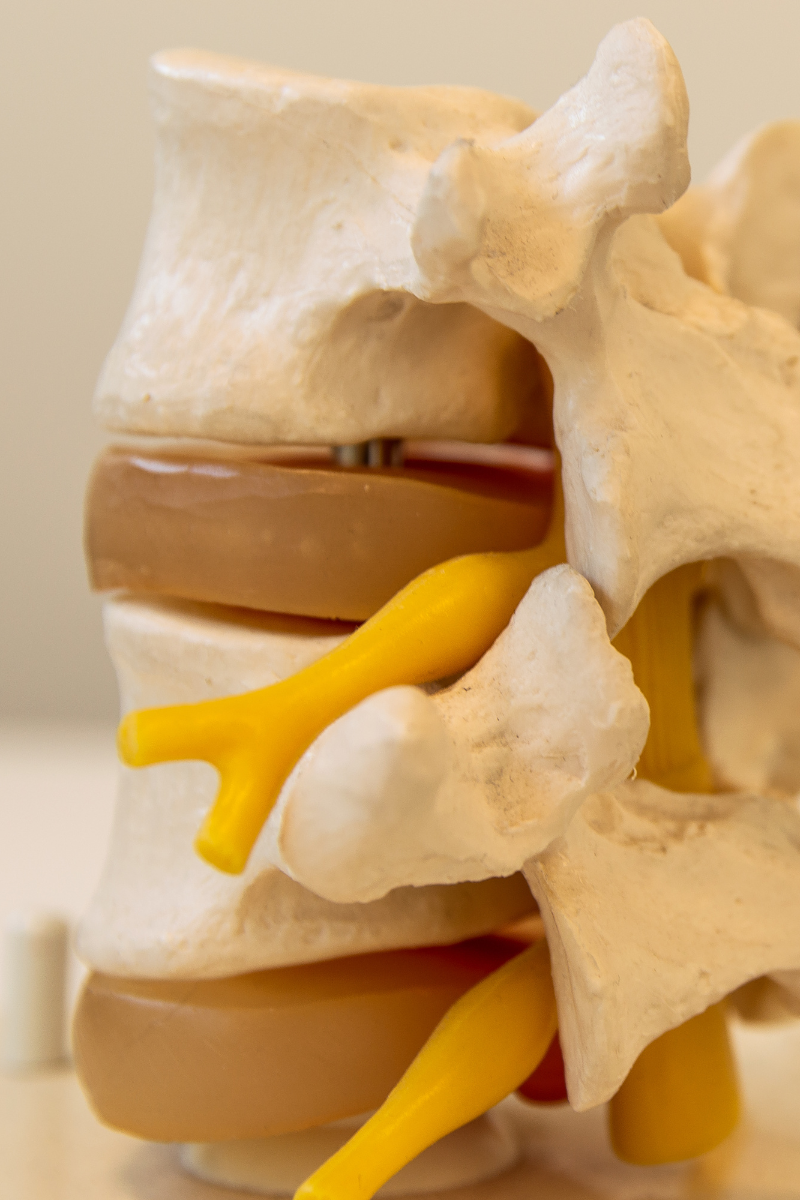
Firstly, it is important to note that when discussing lumbar spine injuries, stress fracture, spondylosis and pars defects are all terms used interchangeably to describe the same pathology. The pars interarticularis is the segment of bone bounded by the lamina, pedicle, and the superior and inferior articular processes (facet joints) of each vertebrae.
Pars defects begin as stress reactions which then progress to stress fractures (spondylosis) which can then become chronic fractures. It is possible that in some cases, pars defects can progress to being complete fractures causing a slipping forward of one vertebrae relative to the one directly below it (spondylolisthesis).
Research indicates that lumbar spine stress reactions (or stress reactions) are most common in athletic populations and we typically see these types of injuries present in our athletic teenage populations. Studies have also suggested that males are more likely to present with pars defects than females.
The main mechanism of injury that results in stress fractures / stress reactions in the pars is repetition and overload and insufficient recovery time. Sports such as diving, volleyball, tennis and cricket are considered to be higher risk sports due to stresses placed on the spine. The movements that are most problematic is repetitive hyperextension and / or rotation of the lumbar spine.
The main sign of lumbar spine stress reactions (and fractures) is back pain that is worse following sport or activities involving repetitive extension of the spine. Pain can sometimes be worse at night. In the clinic, we look at the range of motion of the lumbar spine in addition to taking a good history around symptom behaviour, activities and loading. We often use a combination of lumbar extension and rotation to see if we can reproduce any signs of the issue. It is possible though that clinical examination is clear and asymptomatic. This means we may send off for imaging of the spine to confirm. X-ray can be useful however in many cases MRI is the investigation of choice. Your physio will liaise with your medical professional if this is required.
Restoration of range of motion using physiotherapy is important. So too is resting from the aggravating activities / movements. Physio will aim to keep you as active as possible however we do need to find the sweet spot between continuing to train and play and allowing the spinal symptoms to settle down. This is certainly not a condition to play through as the symptoms (and degree of injury) can worsen if ignored.
Load management is the key to preventing lumbar spine stress related injuries. Knowing which movements are likely to cause issues in our adolescent populations is vital. It is also important to measure load throughout the whole of the week, not just games. For example, in cricket, there may well be a limit on the number of overs that can be bowled in a match, however is anyone monitoring how many balls are being bowled in a net session (and also how many net sessions might be being undertaken). Load management is still an area where as physios we feel more work can be done.
Having a good range of motion in the lumbar spine, thoracic and shoulder girdle is also important in prevention. Abdominal strength is also very important as having strong muscles in this area can help to reduce stresses on the bony structures. Your physio can assess abdominal strength and provide exercises to improve this if needed.
If you have back pain that sounds like it could be stress related, then the best place to start is with a physiotherapy assessment and consultation. We can confirm the diagnosis and provide a plan that manages your symptoms and gets you back to playing. If left untreated, the outcomes are usually poor and can result in significant time away from sport and exercise.
We are here to help.
Chris and the team from Out of the Box Physio